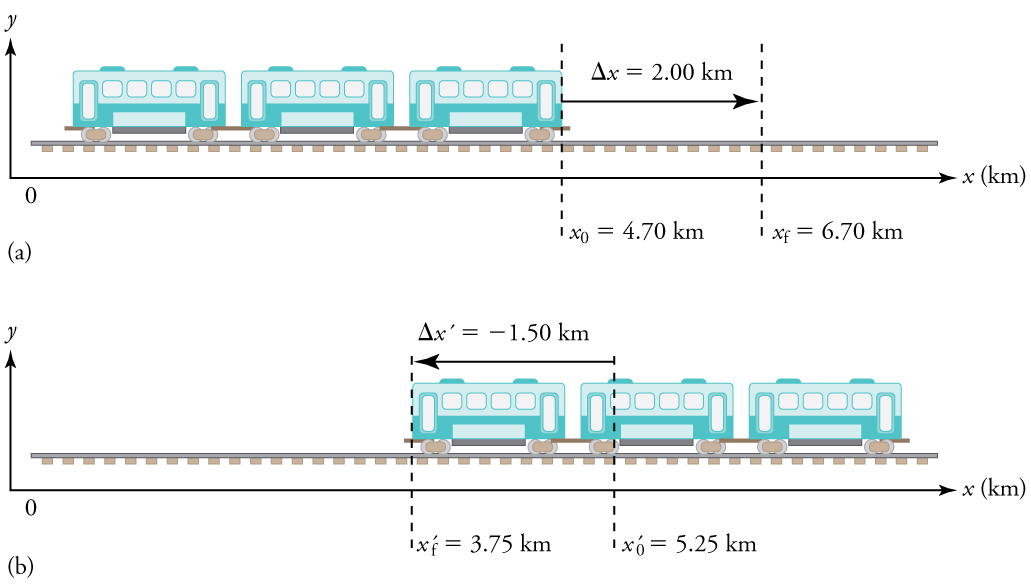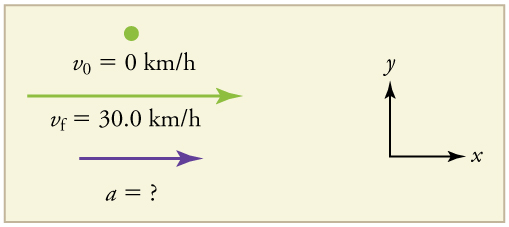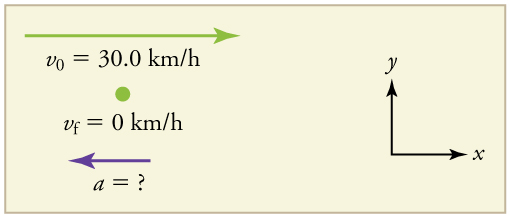| << Chapter < Page | Chapter >> Page > |
The next several examples consider the motion of the subway train shown in [link] . In (a) the shuttle moves to the right, and in (b) it moves to the left. The examples are designed to further illustrate aspects of motion and to illustrate some of the reasoning that goes into solving problems.

Suppose the train in [link] (a) accelerates from rest to 30.0 km/h in the first 20.0 s of its motion. What is its average acceleration during that time interval?
Strategy
It is worth it at this point to make a simple sketch:

This problem involves three steps. First we must determine the change in velocity, then we must determine the change in time, and finally we use these values to calculate the acceleration.
Solution
1. Identify the knowns. (the trains starts at rest), , and .
2. Calculate . Since the train starts from rest, its change in velocity is , where the plus sign means velocity to the right.
3. Plug in known values and solve for the unknown, .
4. Since the units are mixed (we have both hours and seconds for time), we need to convert everything into SI units of meters and seconds. (See Physical Quantities and Units for more guidance.)
Discussion
The plus sign means that acceleration is to the right. This is reasonable because the train starts from rest and ends up with a velocity to the right (also positive). So acceleration is in the same direction as the change in velocity, as is always the case.
Now suppose that at the end of its trip, the train in [link] (a) slows to a stop from a speed of 30.0 km/h in 8.00 s. What is its average acceleration while stopping?
Strategy

In this case, the train is decelerating and its acceleration is negative because it is toward the left. As in the previous example, we must find the change in velocity and the change in time and then solve for acceleration.
Solution
1. Identify the knowns. , (the train is stopped, so its velocity is 0), and .
2. Solve for the change in velocity, .
3. Plug in the knowns, and , and solve for .
4. Convert the units to meters and seconds.
Discussion
The minus sign indicates that acceleration is to the left. This sign is reasonable because the train initially has a positive velocity in this problem, and a negative acceleration would oppose the motion. Again, acceleration is in the same direction as the change in velocity, which is negative here. This acceleration can be called a deceleration because it has a direction opposite to the velocity.

Notification Switch
Would you like to follow the 'Kinematics' conversation and receive update notifications?